Explore Rome's journey from mythic start to modern hub, covering empires, art, and key historical events. A must-see for history lovers.
Read more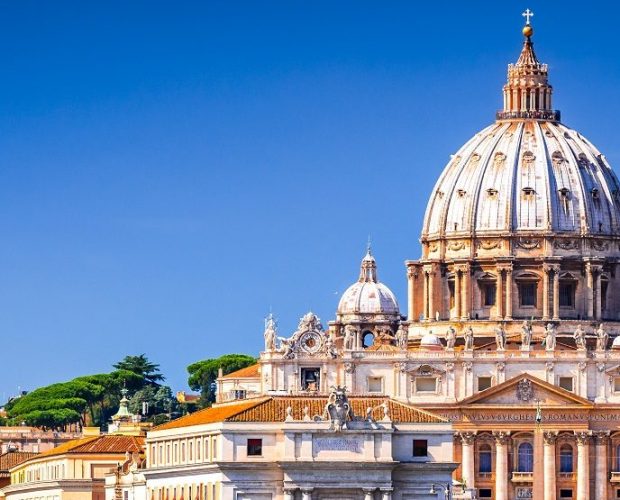
EXPLORE ALL OUR GUIDES TO THE BEST ITALIAN WINE REGIONS
Last updated: August 6, 2024
Lazio, the erstwhile capital of the mighty Roman Empire, is (paradoxically) a latecomer to the Italian wine party. Despite its historical significance, some have described the region in central Italy as ‘disappointing’ due to its lack of famous names and globally recognized appellations. There is no equivalent of Chianti Classico or Brunello in Lazio’s vineyards. This, coupled with the fact that Rome, a historical masterpiece, receives some 35 million visitors yearly, has led to buyers, sommeliers, and consumers not paying much attention to these wines.
However, some interesting styles are made in Lazio today, albeit most fly under the international radar. Nevertheless, the red grape Cesanese can hold its own in a room full of Italian competition, particularly the tannic and yet graceful wines of Piglio DOCG. So, Marino and Frascati can be very drinkable: crisp, dry whites to enjoy on a fall evening in Rome’s magnificent Centro Storico. Meanwhile, a plethora of both cultural and hedonistic pursuits are available for those who decide to sample Lazio’s grape varieties at the source. Rome needs little introduction; however, the region’s incredible natural beauty – rolling hills, Alpennine peaks, and sloping vineyards – remains unspoiled and relatively tourist-free. So what are you waiting for?
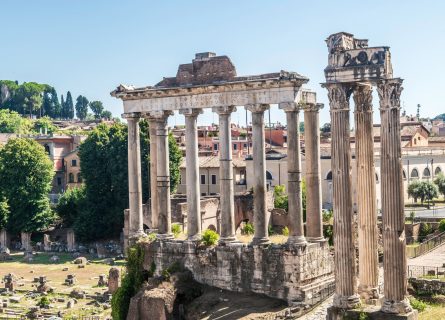
Lazio’s wine history spans over two millennia: Roman Emperors, Popes, Renaissance aristocracy, and contemporary politicians have all left their mark on the region’s viticultural landscape. The Etruscans, an ancient culture that inhabited the country between Tuscany and Rome, were the first in central Italy to cultivate vines and appreciate wine; the colonizing Greeks introduced grapes to southern Italy in a province that became known as Magna Graecia.
Yet the Romans truly industrialized wine growing in Italy, laying the foundations for a thriving pan-European business. Indeed, by the fourth century AD, there were vines in most corners of the Western Empire, including the Loire and Champagne, along the banks of Spain’s Duero River and the Balkans. Meanwhile, the vineyards of Lazio enjoyed a privileged position at the heart of Rome’s epoch-defining polity. They supplied strong and sweetened wines for the cauponae and tabernae (taverns) of the Eternal City, stored in earthenware amphorae. They could hold about 35 liters of this potent brew!
By the 5th century, Rome was in barbarian hands, and the empire lay in ruins. Yet out of the Dark Ages that followed, a new ”power” in wine emerged in the form of The Catholic Church. After Emperor Theodosius designated Christianity as the official religion of Rome, Catholic institutions began to take an active role in winemaking during the Dark Ages that followed. Indeed, Emperor Charlemagne took great and famous pains to regulate wine production in the Holy Roman Empire.
Renaissance Demand
Meanwhile, cathedrals and churches, but above all monasteries, owned or managed vineyards across Lazio. The wealthy merchants of the Renaissance (a 14th-century artistic and cultural movement that started in Florence and spread to Rome) provided an eager market for the (by modern standards) unremarkable wines of Lazio: young, roughly made, and sharp or strong depending on the vintage.
Naming of Est! Est! Est!
According to legend, a German bishop traveling to the Vatican is responsible for naming Lazio’s most iconic style, the imaginatively named Est! Est! Est! of Montefiascone. It is said that the bishop sent a prelate to discover the best wines of the village, instructing him to write Est (“there is” in Latin) on the doors of inns that served delicious local wines.
Meanwhile, the Papal States of central Italy had a powerful and wealthy capital in the shape of Rome. Wine was a central part of the local economy: by the late 19th century, it is believed that no less than 80% of Italy’s population relied on viticulture for a living. Unfortunately, the arrival of phylloxera devastated many regions in Western Europe, including Lazio and neighboring Tuscany. A major replanting program took place in the 20th century. However, it was not until the 1950s, when Italy began to recover from World War II, that anything like prosperity returned to Lazio’s wineries.
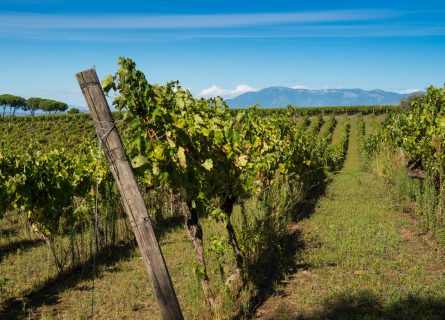
Lazio offers a feast of experiences for the sophisticated traveler, from imperial treasures to lush green hills. And yet, its wine offer is largely the preserve of Romans and tourists, despite the broad range of grape varieties (over 200) and wine styles on offer in this part of central Italy. The question is, why?
In a word, quality. Or lack thereof. With some notable exceptions, the region’s winemaking culture relied on antiquated equipment and generous yields in the 20th century, producing large quantities of neutral white wines for early consumption. Famous appellations such as Est! Est! Est!, meanwhile, was accused of trading on their oddball name as a surrogate for standards and premium quality; a great deal of Montefiasconebianco remains very lackluster today.
In truth, Lazio is not yet on equal terms with the magnificent wines of Tuscany, Umbria, Campania, and Piedmont. There is still much work to be done.
Diverse Viticultural Assets
However, dismissing this diverse region’s entire vinous output would also be unfair. There are over 25 DOCs and three DOCG appellations in Lazio, encompassing a broad spectrum of terroirs and mesoclimates in west-central Italy. To the north and northeast are Tuscany and Umbria, respectively – Campania and the vineyards of Naples are located to the south. To the west is the Tyrrhenian Sea and its (essential) maritime breezes that help to moderate the torrid heat of July and August.
Elevation also plays a key role in Lazio viticulture; the western foothills of the Appennino Abruzzese are prime vineyard real estate, as diurnal temperature variation helps maintain the grapes’ acidity. Yet, at the same time, mountainous terrain provides shelter from the chilling winds of January and February.
Organic Growth and Grape Varieties
Today, there are approximately 18000 hectares under vine in the wider region, including a growing population of organic vineyards. Many of the leading appellations – Marino, Frascati, Castelli Romani, and Cesanese del Piglio – are located to the south of Rome and flanked by the Apennines to the east. These ancient volcanic soils, however, can be too fertile for high-quality viticulture: the plant’s metabolism goes into overdrive, delivering inflated yields and dilute juice.
Fortunately, some exceptional climats (vineyard sites) in the hills of Lazio combine a favorable, south-facing aspect with good drainage and elevation. Rich in potassium and chalky limestone, tufa (tuffeau to the French) is ideally suited to producing high-quality white wines.
The signature grapes of Lazio include the esoteric Bombino Bianco, Bellone Bianco, Campania’s Greco, and the ubiquitous (and derided) Trebbiano. There is also a great deal of Malvasia di Candia and Malvasia Puntinata grown across the region, particularly in the vineyards of Frascati and Cannellino di Frascati.
However, Lazio is not immune to globalized trends and accountant-led winemaking: Chardonnay and Sauvignon Blanc have been making considerable inroads in recent years. The resulting output varies significantly – impressive drops, execrable plonk, and everything in between!
International Influence
International red grapes are also growing in popularity in the vineyards of Rome. Syrah, Cabernet Sauvignon, Merlot, and even Tempranillo can thrive here, while the native Cesanese is starting to impress critics and sommeliers who want to keep their consumers engaged with up-and-coming styles. Local Canaiolo, Ciliegiolo, and Nero Buono also show great potential – judicious site selection and rigorous canopy management yield aromatic red wines that showcase crunchy fruit and moderate tannins. When served lightly chilled, they perfectly complement a summer picnic on the shores of Lake Bolsena.
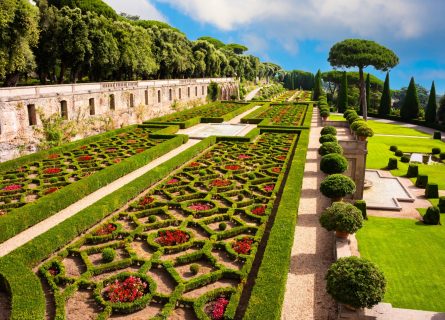
The vineyards of Rome’s backyard have been making white wines since the days of Etruscan warriors and Roman Emperors. Yet the traditional output of Lazio’s cooperatives would surely horrify modern audiences: sweet (‘abbocato’ in Italian) and neutral whites with low acidity and a dearth of character. Some of the most famous examples include Marino and Frascati DOCs, both easily accessible from the suburbs of Rome.
However, the appellation of Frascati now regulates the production of dry wines (still and sparkling) that rely heavily on local vine varieties. Blends are the lifeblood of the zone, typically a mixture of Malvasia di Candia, Malvasia Puntinata, Greco, Trebbiano, and/or Bellone Bianco. The designation was created in 1966 when stainless steel and temperature control were not yet widely available in the cellars of Italy.
Today, fermentation in steel tanks is commonplace in most wineries and is used to produce aromatic and fruit-driven styles.
Castelli Romani and Marino
Thus, the wines of the Castelli Romani (a group of hillside and lakeside villages to the south of Rome) have improved dramatically in the 21st century, with far less oxidation and stale neutrality present in the critical mass of labels. That said, even well-made Frascati is seldom a dead ringer for Montrachet. Or, indeed, Spain’s Godello. At best, it offers clean fruit, fresh acidity, and a stylistic coherence; very few blends are matured in wood, as Frascati is designed for early consumption. Two additional designations, Cannellino di Frascati and Frascati Superiore DOCG, govern the production of botrytized sweet wines and a superior dry white, respectively.
In neighboring Marino, both sweet and dry wines are made on the outskirts of a beautiful castle town, where vineyards are cooled by maritime winds that blow off the Tyrrhenian Sea. In tandem with Frascati, local growers pick and mix from an eclectic palate of regional flavors. However, even ”single-varietal” labels made from Bellone, Greco, Malvasia, and Verdicchio can legally incorporate other grapes – the maximum permitted is 15 percent. It is said that Marino outclasses Frascati due to the former’s superior body and intensity of fruit flavor.
Moving north, Est! Est! Est! has established a reputation entirely based on its quirky name and a romantic origin story involving a German bishop and a manservant called Martinus. The wine, however, is usually the subject of derision from buyers and critics: even modern technology cannot coax much flavor out of high-yielding Trebbiano Toscano.
Nevertheless, these still and sparkling blends, sweet and dry, can offer welcome refreshment in the hot summer months – the key is to moderate your expectations. Moreover, Est! Est! Est! is widely available and rarely expensive.
Emerging Red Wine Excellence
This is mainly due to its extensive acreage and high-yielding vines: the appellation is situated to the north of Rome, encompassing the communes of Montefiascone, Bolsena, San Lorenzo Nuovo, Grotte di Castro, Gradoli, Capodimonte and Marta. Indeed, the lake-facing scenery is absolutely idyllic and perfect for a weekend break away from the madness of the Eternal City.
The area’s fertile soils provide a generous supply of quaffable white: clean, crisp, and inoffensive to drink. Sparkling versions, typically made via the tank method, are delicious alongside freshly caught seafood. Just don’t expect a facsimile of Champagne.
Meanwhile, Lazio’s best producers have demonstrated that we should pay closer attention to its hitherto underappreciated red wines. The star turn is undoubtedly Cesanese, a unique red grape with no fewer than two DOCs and one DOCG. The latter, Cesanese del Piglio, is perhaps the most exciting subregion operating in Lazio today. Working with exceptional parcels of old Cesanese vines, winemakers such as Damiano Ciolli are helping to bring respect and acclaim back to the vineyards of Rome.
Cesanese Wines
So, too, is the dynamic local Consorzio motivated by quality. According to the DOCG framework, Cesanese must constitute at least 90 percent of the final blend. However, a broad spectrum of native and imported grapes, including white varieties, can be added to the wine. The vignoble is found southeast of Italy’s capital, surrounding the towns of Serrone, Acuto, Anagni, and Paliano.
After the harvest and vinification, stainless steel and/or concrete are normally used, and a Cesanese del Piglio Speriore is matured for 18 months before release. Neutral oak is preferable as new barrique can overwhelm Cesanese’s spicy and floral perfume.
In the Middle Ages, Popes Innocenzo III and Bonifacio VIII were reportedly very impressed by Cesanese’s attractive cherry and red pepper bouquet. Doubtless, the wines would have been drunk young in this era –imbibed from metal and ceramic goblets adorned with elaborate motifs.
Yet, the grape does not usually show its full hand until at least 5-7 years in bottle. What emerges can be deliciously concentrated and seductive, a union of red fruits and spicy/herbal notes that recall the garrigue-covered hills of southern Italy. The best examples should be enjoyed with 5-star cuisine: tagliatelle al ragù d’anatrad (duck ragu), porchetta (roast pork), and braised lamb, Abruzzi style.
Equally, plenty of international varietals are available if you want to play it safe. Marketed under the highly flexible IGP and vino de Tavola designations, regional Bordeaux blends can be a good value alternative to the more established names of Tuscany. The growing number of Syrah wines, albeit off a small base, are also worthy of closer investigation.
Unlocking Bombino's Secrets: From Industrial Production to Boutique Excellence. Explore the Spectrum of Italian White Wines!
Find out moreBellone Bianco is a light-skinned grape variety primarily grown in Lazio, Italy, particularly around Rome, where it has a long history of cultivation. It is a key component of the region's light, delicate white wines, with Roma Bellone being one of the two varietal wine styles recognized under this title. Besides primarily producing light, fresh white wines, Bellone Bianco is also utilized for sweet, late-harvest wines.
Discover Greco: Campania's Opulent White Wine with a Twist. Experience the Unique Flavors of Irpinia's Best Whites
Find out moreMalvasia di Candia is a grape from the Greek port of Candia, which the Greeks brought to Italy's Apennine peninsula. Primarily cultivated in Lazio, Italy, this grape is often used in blends with Trebbiano to produce crisp, dry white wines with citrus and orange blossom notes. Varietal wines from Malvasia di Candia are also made in the neighboring region of Emilia-Romagna.
Experience Trebbiano Toscano's Renaissance: Aromatic & Fresh Bianco Toscana IGT from Petrolo. The Future of Italian White Wine
Find out moreDiscover Canaiolo: Tuscany's Wine Legacy & the 'Governo' Technique That Rescued Chianti in 19th-century winemaking.
Find out moreCiliegiolo, a red grape from central and northwestern Italy, is gaining popularity in Liguria and Tuscany. It's featured in various Italian DOCs, including Chianti, and has seen a rise in varietal IGT wines since 2000. Known for its cherry-like color and aroma, Ciliegiolo adds freshness and liveliness to wines, catering to the demand for early-drinking yet characterful wines. The grape requires careful cultivation due to mildew susceptibility.
Cesanese is a distinctive red wine grape from Lazio, Italy, known for its bright fruit flavors and earthy notes. It thrives in the hilly areas south of Rome and is available in the common Cesanese Comune and the superior Cesanese di Affile. Both are integral to local DOCG and DOC wines, but Cesanese di Affile is especially valued, having its own DOC.
Unlocking Montepulciano: Italy's Unsung Red Grape Hero with a Refined Twist. Explore the complex flavors and potential of this underrated gem
Find out moreMerlot is the most cultivated grape in Bordeaux and closely related to Cabernet Franc
Find out moreNero Buono is a dark-skinned red wine grape from Lazio, central Italy. It is primarily used in the blended Cori Rosso wines of the Cori DOC, alongside Montepulciano and Cesanese. Nero Buono produces mid-weight wines with high anthocyanin levels and rich black-fruit flavors. It adapts well to both calcareous and volcanic soils.
Unearthing Sangiovese: Italy's Ancient Grape with a Complex History. Explore its journey from Etruscans to modern-day excellence.
Find out more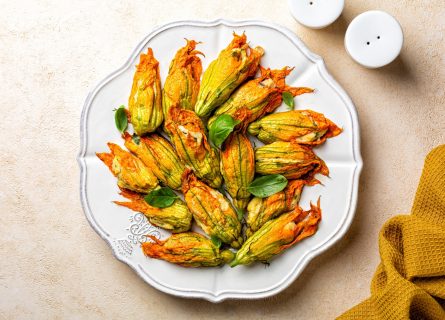
Lazio’s diverse food culture is rooted in its multicultural past: deep frying, which originates in Jewish cooking, is an essential part of any culinary experience in the towns and villages of Castelli Romani. Deep-fried fillets of baccalà (salt cod), fiori di zuzza (courgette flowers) stuffed with mozzarella and anchovies, and carciofi alla giuda (artichokes) are a must on any gastronomic itinerary.
Meanwhile, the atmosphere in the summer months is simply unbeatable: most establishments offer outside tables in unbelievably cute piazzas and medieval alleyways. Arrive early or book ahead to secure your little piece of romantic paradise.
A Gastronomic Guide to the Cuisine of Lazio: read more
If you would like us to customize an exclusive luxury tour, contact us and let us know your travel plans. We offer luxury food and wine tours for private groups of a minimum two guests. In addition, all of our private, chauffeured tours are available year-round upon request.

